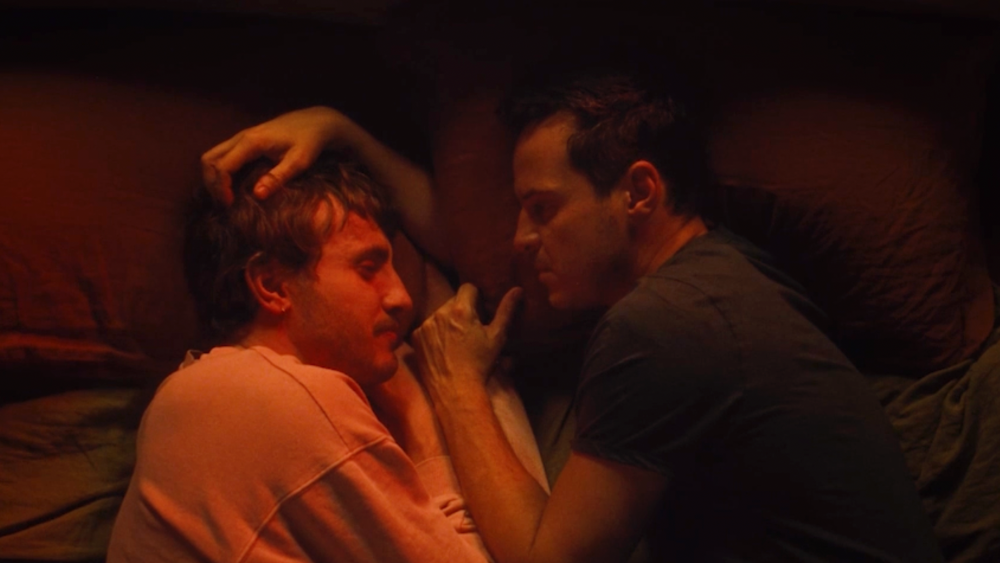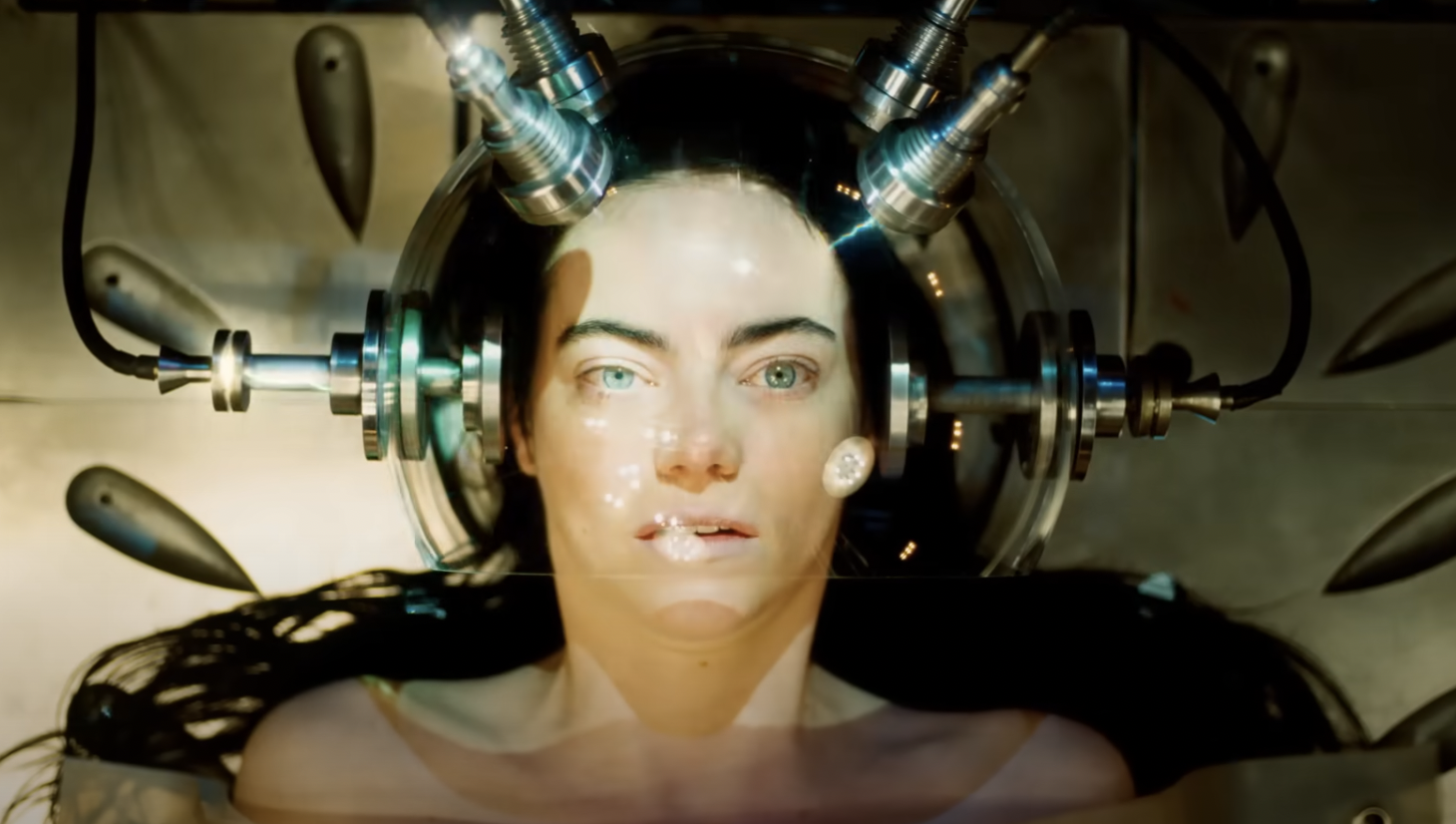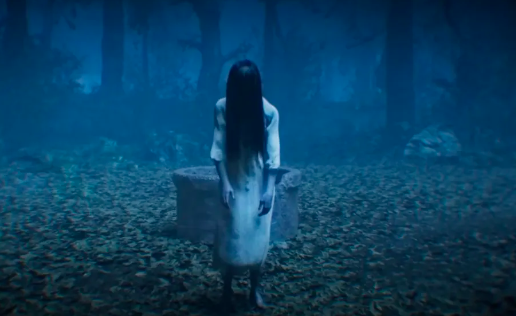Books & Culture
Tension of the Frame: How Point of View Can Heighten Drama in Fiction and Film

Any time you tell a story, you make choices about what to include and what to leave out. It’s like taking a picture; you look through the viewfinder and see which composition best conveys the impression you want to give of the landscape, the fish tacos, or the new haircut. But sometimes it can be useful to make the edge of that composition, the frame of the camera, a point of tension by reminding the viewer of what they aren’t seeing.
Take the opening shot of Denis Villeneuve’s Sicario. The camera looks down on a quiet housing development from a grassy overlook in Chandler, Arizona. It appears to be a typical establishing shot, inert like a still image, until a SWAT team silently enters from the corner of the frame and the camera pans revealing a sniper set up on the hillside. Without a single cut, our first impression of the scene changes and this seemingly neutral landscape becomes charged. The implication is clear: don’t trust the frame of the camera because you don’t know what is lurking just beyond its borders.
The implication is clear: don’t trust the frame of the camera because you don’t know what is lurking just beyond its borders.
In fact, the entire opening scene plays out this way. A SWAT vehicle bursts through a living room wall, disrupting an otherwise peaceful scene. As Kate Macer (Emily Blunt) moves from room to room, we know that danger lurks behind every door. The seconds before she turns a corner are excruciating because we can’t see what will come next. We long for the camera to switch to a different perspective so that we aren’t limited to the borders of the frame. Even once the house is cleared and the characters begin to relax the danger isn’t over. The horror they discover behind the walls and the unexpected scene ending both reinforce the lesson of the opening shot. What we can’t see is just as important as what we can.
This opening makes the viewer anxious about the frame, worried about what dangers lurk just out of sight. Not only does it add tension, it also resonates thematically with the story. In the film, Mexican cartels move drugs across the border into the US, and a shadowy government task force crosses legal and moral lines in attempting to bring them down. Frames, lines, and borders are all sources of conflict in the movie. By challenging our tacit acceptance of the camera’s frame, Villeneuve suggests we interrogate those boundaries and look beyond the limited scope of any single point of view.
Frames, lines, and borders are all sources of conflict in the movie.
Sicario may be a well-crafted thriller but no film in recent memory uses the tension of the frame to greater effect than It Follows. In the movie, Jay (Maika Monroe) becomes infected or cursed (however you want to think of it) after sleeping with her boyfriend and spends the rest of the film being followed by a creature that can take the form of a friend or stranger. The creature will walk slowly toward her, no matter where she is, until she either passes the sexually transmitted infection/curse on to someone else or dies.
Horror movies always make us wary of what we can’t see, but we typically have a good gage for when a jump scare might be coming. It Follows is so effective because the creature could approach at any time and it could take any form. As a result, every shot is loaded with apprehension. No matter what is happening on screen we’re always searching the corners of the screen for someone walking in Jay’s direction.
There are some showy camera moves that use the tension of the frame to play on our emotions — one especially horrifying 360-degree rotating shot comes to mind — but director David Robert Mitchell knows that simple techniques will work just as well. For instance, when the camera pushes in for a close up during a discussion with a friend the tension increases because our field of vision is even more limited. In this way even normal conversations shot with conventional over-the-shoulder framing become excruciating to watch. We are always worried by what we can’t see.
…even normal conversations shot with conventional over-the-shoulder framing become excruciating to watch. We are always worried by what we can’t see.
It’s tempting to read into the technique, as many have, and claim the movie is making some statement about sexual promiscuity and unforeseen consequences. But It Follows resists simple interpretations. Instead, from a craft perspective it shows that the tension of the frame can drive an entire narrative and make conventional techniques feel new again. Most of the time we don’t even notice what we aren’t seeing. It Follows not only reminds us of what lies outside our field of vision, the film weaponizes it.
Several books this past year have also gone out of their way to remind us about what typically stays outside the frame of a story. In Fates and Furies, Lauren Groff uses the tension of the frame to breathe new life into the old idea that every marriage has two sides. The first half of the novel tells the life story of Lotto, an over-confident young actor who marries the beautiful Mathilde and becomes a world-famous playwright. The second half switches to Mathilde’s point of view and methodically undermines everything we learned in Lotto’s story. The limitation of their perspectives becomes the engine of the novel.
Lauren Groff uses the tension of the frame to breathe new life into the old idea that every marriage has two sides.
It seems like such a simple structure, but it works in complex ways. During the first half of the book, we want to know what is missing from Lotto’s point of view. Whenever he looks at Mathilde we wonder what she is thinking. That not-knowing provides slow-burn underlying tension that keeps us reading. During the second half of the book we have a deeper understanding of the marriage than Mathilde because we’ve seen what she can’t see — Lotto’s point of view. Dramatic irony is always tinged with a kind of sadness — it was key to O’Henry’s famously melancholy stories — and it works well here to remind us of our own limited perspective on the world, of the power stories have to help us transcend that limitation. As one passage in the book puts it, “The lives of others come together in fragments. A light shining off a separate story can illuminate what had remained dark. Brains are miraculous; humans storytelling creatures. The shards draw themselves together and make something whole.”
But more importantly, Groff uses Lotto and Mathilde’s dual points of view to show that no perspective is neutral. Lotto’s life as an actor and famous playwright seems fated because he can’t see how being a privileged white man makes his life so easy. Mathilde’s point of view illuminates the ways she is limited just by being a woman in a world that is still patriarchic and sexist. This is the genius of Fates and Furies. The tension of the frame takes on political power. It implicates Lotto and by extension the reader who identifies with his naïve perspective. Groff shows us we’re not just limited by how we see the world; we’re limited by how the world sees us.
Groff shows us we’re not just limited by how we see the world; we’re limited by how the world sees us.
Finally, The Story of My Teeth, written by Valeria Luiselli and translated by Christina MacSweeney, teaches a similar lesson about perspective and storytelling. But rather than just showing one perspective and then the another, Louiselli and MacSweeney take the unraveling of those points of view, the unraveling of the process of storytelling, as their subject.
The book is narrated by Gustavo “Highway” Sánchez Sánchez, a security guard who works at an art gallery run by a Mexican juice factory. Highway tells the story of his “dental autobiography,” how he quit his job, trained to become an auctioneer, won Marilyn Monroe’s teeth in a bidding contest, and eventually had them transplanted into his own mouth.
This would be a fascinating story on its own but it’s not the story Luiselli wants to tell. As the book progresses we come to learn the narrator isn’t actually Highway. Highway is dictating the story of his teeth to Jacobo de Voragine, a local writer and tour guide. Voragine then retells Highway’s story from his own perspective, revealing places where Highway lied or stretched the truth. Like Fates and Furies, the book makes us aware of the limitations of a single point of view. As Highway is told at one point, “Don’t you realize…the schism between the perception you have of yourself and the perception other people have of you is irreconcilable?”
Finally, in an afterward, Valeria Luisella explains that the entire novel was written in collaboration with the workers of a juice factory outside Mexico City.
But then the book starts to unravel further. In the next chapter pictures of real-life locations in Mexico are combined with quotes from famous writers and thinkers. The following chapter, written by the translator of the book, Christina MacSweeney, consists of a timeline combining real historic events alongside the fictional events of the novel. Finally, in an afterward, Valeria Luisella explains that the entire novel was written in collaboration with the workers of a juice factory outside Mexico City.
Each section pulls back another layer, revealing what wasn’t in the frame before. We’re used to thinking of a book as a product of a single author but The Story of My Teeth challenges that assumption. The lines that separate character and narrator and author become sources of tension and blur the boundary between truth and fiction until that binary distinction is shown to be meaningless. The novel is less the story of Gustavo “Highway” Sánchez Sánchez and more the story of how stories are told, what gets left out, and who does the telling. As Voragine says, “When Highway first began to recount his stories to me, I thought he was a compulsive liar. But then, living with him, I realized that it had less to do with lying than surpassing the truth.”
As writers and storytellers we’re often taught the many ways conflict can be created within a narrative by focusing the obstacles that push back against a character’s desires. But every story also contains hidden conflict between what is and isn’t shown, between who is allowed to tell the story and who is not. By revealing the frame as a source of tension and making the viewer or reader aware of what they can’t see, we can not only make our stories more thrilling, we can expose the many dangers inherent in our default setting: the belief that I am the center of the world, that my perspective is the only one that matters.









